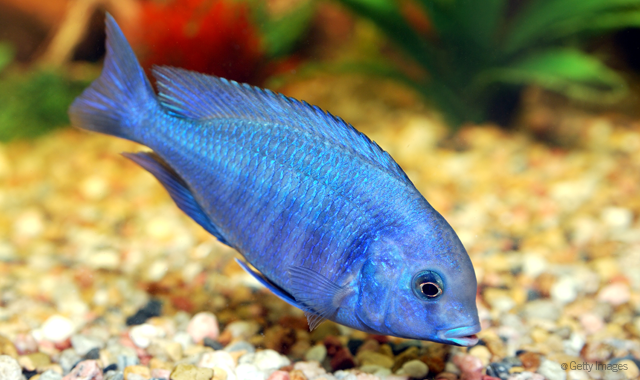Will humans soon be able to regrow teeth? New research gets one step closer to making it happen.
Knock an adult tooth out, and you’re out of luck: Humans only get two sets of teeth that have to last for an entire lifetime. Not true for one type of fish, that can constantly regrow teeth to replace missing ones – a fish that researchers hope holds the secret to tooth regeneration in humans.

Knock out an adult tooth and you’re out of luck: Humans only get two sets of teeth that have to last for an entire lifetime. Not true for one type of fish, that can constantly regrow teeth to replace missing ones – a fish that researchers hope holds the secret to tooth regeneration in humans.
In a recent study, researchers at Georgia Institute of Technology and King’s College in London studied hundreds of Lake Malawi cichlids, which can go through hundreds of teeth during their adult lives. Examining embryonic fish, researchers attempted to identify structures that trigger new tooth growth, and determine how long those structures remain active.
More emerging research: Study finds nanodiamonds might prevent tooth loss after root canals
Lake Malawi cichlids, native to their namesake Lake Malawi in Tanzania, are small fish that live among the piles of rocks on the rocky shores of the lake and eat predominantly algae. In this type of cichlid, taste buds and teeth both grow from the same epithelial tissue, and, since fish have no tongues, taste buds grow interspersed among the teeth. The epithelial tissue in the developing jaws of the cichlids differentiates later in development, with some tissue becoming teeth with dentine and enamel, and some growing into softer taste buds.
There are two types of Lake Malawi cichlids that have adapted in different ways to the environment, with one developing more teeth and taste buds. By crossing the two species, researchers were able to examine genetic differences and differing numbers of teeth and taste buds in second-generation hybrids, effectively mapping the genome that controls the development of the different structures.
Related reading: Everything we need to know about teeth, we learned from Shark Week
“Using a combination of genome mapping, synexpression analysis and small-molecule manipulation, we identify factors that couple tooth and taste bud density … and those that differentiate the identity of each organ,” the study stated.
After identifying the genes that controlled the “correlation between tooth and taste bud densities,” researchers then exposed embryotic cichlids to chemicals that influenced the development of teeth and taste buds to manipulate the progression of one over the other. They were able to boost the growth of taste buds over teeth, but only at an early developmental stage when the fish were still developing jaws.
Continue to page two for more...
“There appear to be developmental switches that will shift the fate of the common epithelial cells to either dental or sensory structures,” said Todd Streelman, a professor at the Georgia Tech School of Biology, in a recent news release.
The study indicated that with the right stimulation, human epithelial tissue might also be manipulated into regenerating new teeth. However, researchers would still have to determine the development of blood vessels and nerves in teeth before the teeth would be completely viable, but the research team believes it is a step in the right direction. They will next examine how far into adulthood the plasticity extends in terms of differentiation in development.
Related research: New study finds beaver teeth could provide insight on human tooth decay
“It was not previously thought that development would be so plastic for structures that are so different in adult fish,” Streelman said. “Ultimately, this suggests that the epithelium in a human’s mouth might be more plastic than we had previously thought. “
The study also examined dental differentiation in mice, which also indicated that the ability to grow new teeth might extend further into development than previously believed.
More emerging research: Can daily doses of a sugar subsitute reduce the risk of caries?
“The exciting aspect of this research … is being able to identify genes and genetic pathways that naturally direct continuous tooth and taste bud development in fish, and study those in mammals,” commented Paul Sharpe, a professor from King’s College. “The more we understand the basic biology of natural processes, the more we can utilize this for developing the next generation of clinical therapeutics.”
The research, entitled "Coevolutionary patterning of teeth and taste buds," was published in the jounral Proceedings of the National Academy of Sciences.